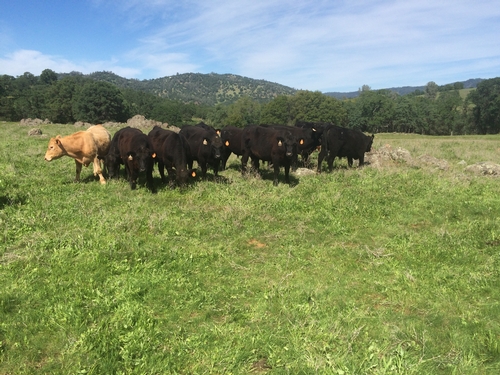With the fires raging across the state, we are reminded once again of the risk wildfire poses to all of our farms and ranches. It is a good time to revisit (or create) a farm and ranch safety plan and update it with any missing information. If you have livestock, you will need to create an emergency plan for your animals.
There are five main components to your wildfire plan:
- Reducing fire risk
- Escape Routes
- Leaving Animals on the Property
- Backup
- Other considerations
Reducing fire risk
One first step would be to set up a meeting with CalFire to review how to make your house, other structure, propane tank, and property more fire safe. You should consider creating an area of defensible space around your corrals/barns/small pastures adjacent to structures as well as your house. Disking at least ten feet around the perimeter would be a preferred option as well.
Water Supply
Determine if you have adequate water supply to fight the fire and wet down buildings. Is your source of water a well, irrigation ditch and /or pond? Do you have the ability to pump without power? This would mean a gas or diesel generator to ensure that you would be able to pump water. This would also mean adequate fuel to run the generator. You should still consider a backup generator even if you have gravity flow water because you may not have power for an extended period of time.
Escape Route
Do you have two separate ways in and out of the property? If not, is there a way to create an alternative route? If you only have one way in and out, what would you do if there was a fire approaching? You should contact friends or family that live out of your immediate area that may be able to temporarily house livestock. Fairgrounds and other facilities will also be available to house livestock during a wildfire evacuation. It is a great idea to contact local fairgrounds and facilities to learn more about temporary housing for livestock. Please note that you should contact friends, family, fairgrounds, and other potential facilities in the near future to discuss the situation.
The process is more than hauling animals and dropping them off. Where do you unload animals? Where will they be housed? What other feed, water troughs, and equipment do you need to bring? Is there someone who could temporarily feed and water while you were gone for a day or two trying to fight the fire on your property?
Leaving Animals on the Property
Many of us simply have too many animals and not enough transportation capacity to evacuate all of our animals from the path of an impending wildfire. Leaving animals out in a pasture, or “sheltering in place,” is a good option if the conditions allow animals to stay safe during a fire. According to the Humane Society of the United States, large animals may be able to shelter in place during a wildfire if a pasture area meets the following criteria:
- Over 1 acre in size,
- Has no overhead powerlines or poles,
- Has no barbed wire fencing (woven wire fencing is best).
- For high-wind scenarios, the pasture area must also be free of debris and easily uprooted trees.
You will also need to leave enough food and water for your animals to survive for a few days. You will not be able to return to your property to care for your animals until road closures and evacuation orders are lifted. Do not rely on automatic watering systems as power outages are likely in the event of a fire.
Many large animals are injured and killed attempting to escape from the path of a wildfire. Take down any portable fences and give your animals the largest space possible to move around in.
Backup
Do you have a designated backup in case you are away when the fire starts? This person would need familiarity with all of the above and live close by. Related to this is when to make the call to your backup person for hauling animals off the property. You must think quickly as conditions on a fire can change in less than hour. You should develop a decision-making process and a designated critical point that would mean implementing the fire plan.
Other Considerations
Fires can happen suddenly and require rapid action. Keeping emotions in check will be critical to reacting effectively and staying calm. Normally calm animals will be excited by the fire and smoke and will be more difficult to handle. This will require patience to be sure they can be loaded in a trailer or herded to a safer location on the ranch as quickly as possible.
Situational awareness is a good concept to consider. This can be accomplished by developing a network of communication with other ranchers and landowners. Text messaging, email, or phone call can be an effective, quick way to inform others if you are seeing smoke or low flying airplanes as a first alert that a fire is in the area.
This is a good reference from New York that contains helpful checklists:
http://www.agriculture.ny.gov/ai/livestock_disaster_guide.pdf
Additional information on wildfire evacuations are included here:
http://www.calfire.ca.gov/communications/downloads/fact_sheets/Animalevacuation.pdf
http://www.readyforwildfire.org/docs/files/CALFIRE_Go_Brochure.pdf
